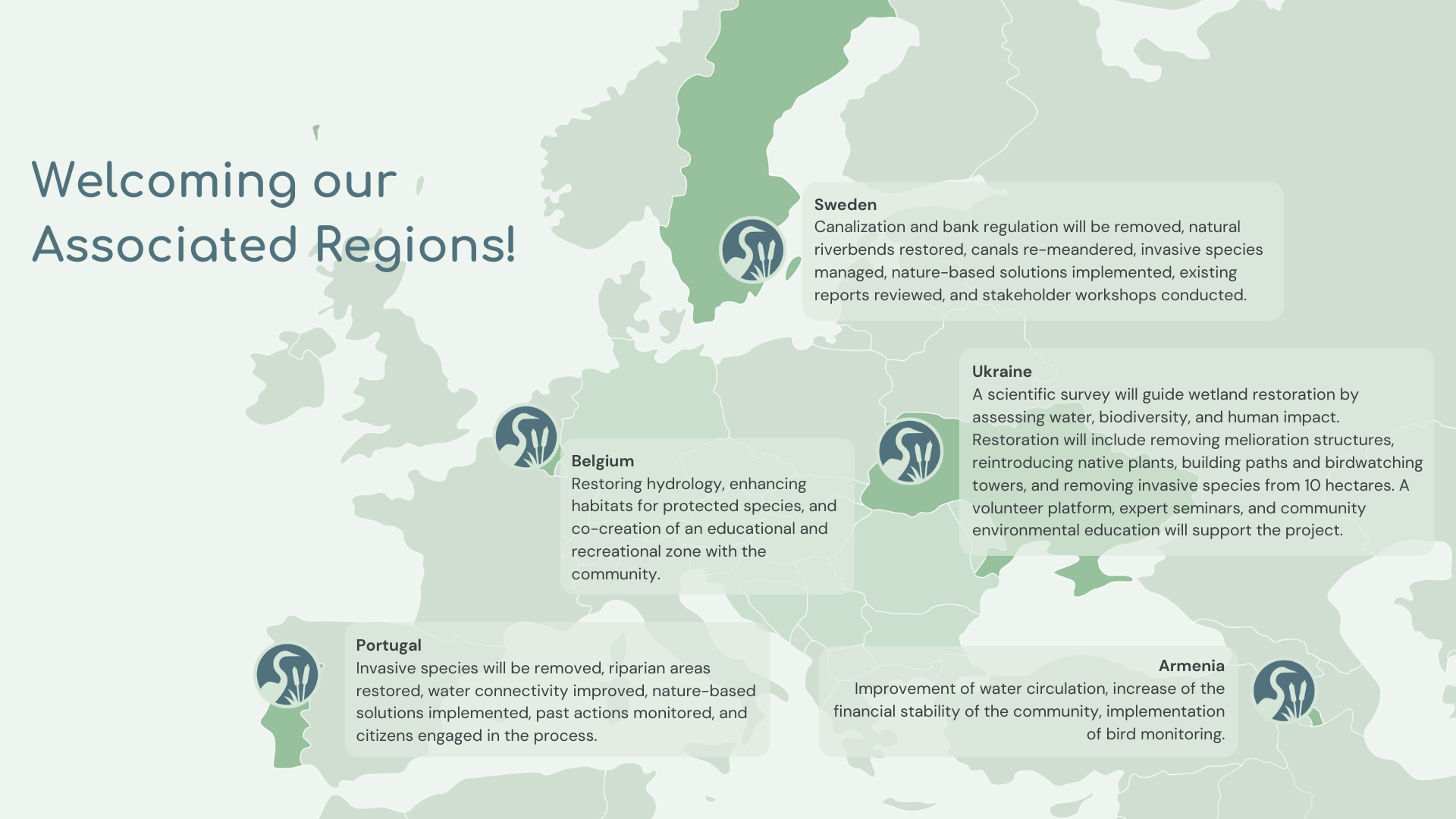Monitoring sites
Gornje Podunavlje, Serbia

Site features
The Gornje Podunavlje (Ramsar Site 1737, IBA, IPA, UNESCO Biosphere Reserve, Special Nature Reserve at national level) is marsh complex located along 36km section of the Danube River in Serbia, forming a natural unity with the Gemenc and Kopacki Rit Ramsar sites in Hungary and Croatia respectively. It sustains many rare and nationally and internationally threatened plant species, along with their associated communities, and supports vulnerable habitats. However, potential threats arise from past drainage and irrigation efforts, as well as concerns related to eutrophication and the presence of invasive species.
Ecosystem
This area is a suitable habitat for rare plant species including winter aconite (Eranthis hyemalis), water violet (Hottonia palustris), and mare’s tail (Hippuris vulgaris). It plays a crucial role as a spawning place and migratory route for fishes, a nesting site for the white-tailed eagle (Haliaeetus albicilla) and the black stork (Ciconia nigra), and is home to the largest population of red deer (Cervus elaphus) in Serbia.
Facts & Figures

Wetland area: 20 000 ha (49% belongs to alluvial forests)

230 bird species (145 of conservation interest)

60 butterfly species (32 of conservation interest)

About 1000 plant species

Location
Serbia
The Gornje Podunavlje wetland area comprises a distinctive mosaic of aquatic, wetland, and terrestrial ecosystems, serving as a biodiversity hub in the Middle Danube Basin.
Existing projects
WILDisland – The Danube Wild Island Habitat Corridor (LIFE20 NAT/AT/000063)
Restoring the Amazon of Europe: Reconnecting Riverine Habitats in the First five-country UNESCO Biosphere Reserve (Endangered Landscapes & Seascapes Programme)
Enhancing the In-situ Environmental Observations across Under-sampled Deserts – CiROCCO (Horizon EU 101086497)
LIFE RESTORE for MDD (Project 101113557 — LIFE22-NAT-AT-LIFE RESTORE for MDD)
Previous restoration efforts
Previous restoration efforts included removal of invasive plant species from ponds and salt marshes, regular maintaining of wet meadows, revitalization of ponds, and restoration of hydrological regime in Štrbac and Široki rit wetland sections.
Restore4life upcoming monitoring activities
Restoration of two islands and improving conservation status of priority alluvial forest habitats 91E0* within the WILDisland project (LIFE20 NAT/AT/000063)
Involvement of the community
The community around the area will actively benefit and participate in the wetland restoration plan. Educational programs and workshops will empower community members with knowledge about wetland ecosystems, fostering environmental stewardship. Additionally, the restoration plan can generate employment and ecotourism, leading to economic benefits for the local residents. Overall, the community’s active involvement ensures a holistic and sustainable approach to wetland restoration.
Expected Impact
The main benefits for the local community are expected to include enhanced recreational activities stemming from improved biodiversity, as well as increased employment opportunities. This dual benefit not only contributes to the community’s well-being but also fosters a sustainable and economically viable relationship with the restored wetland ecosystem.
Site gallery








